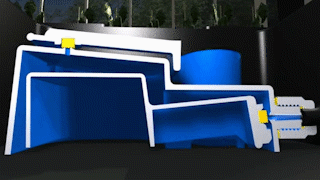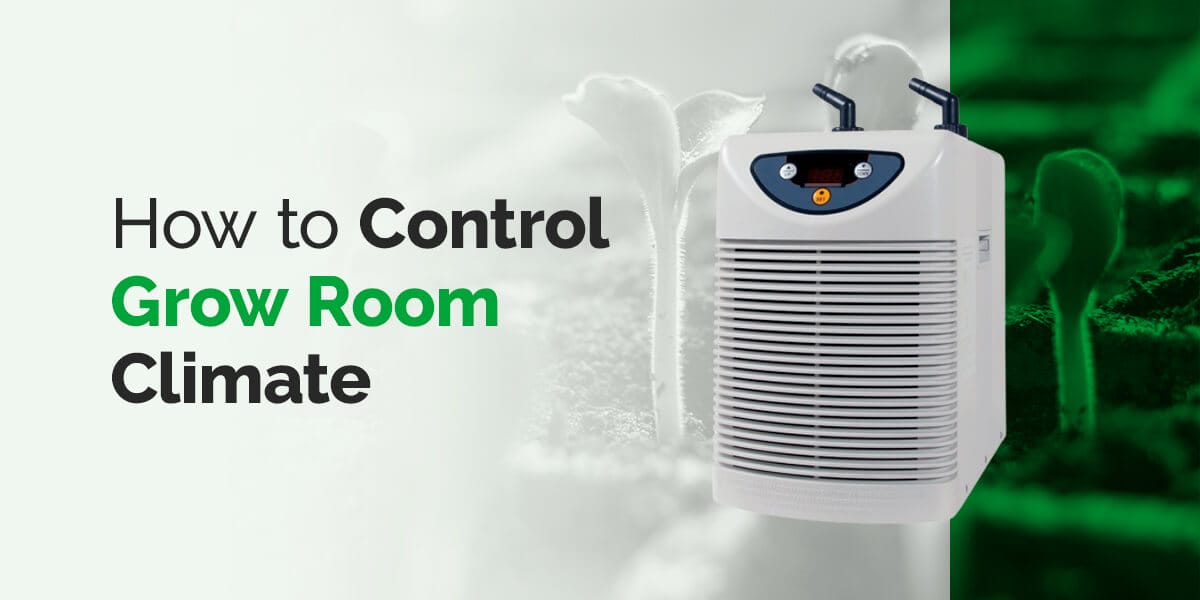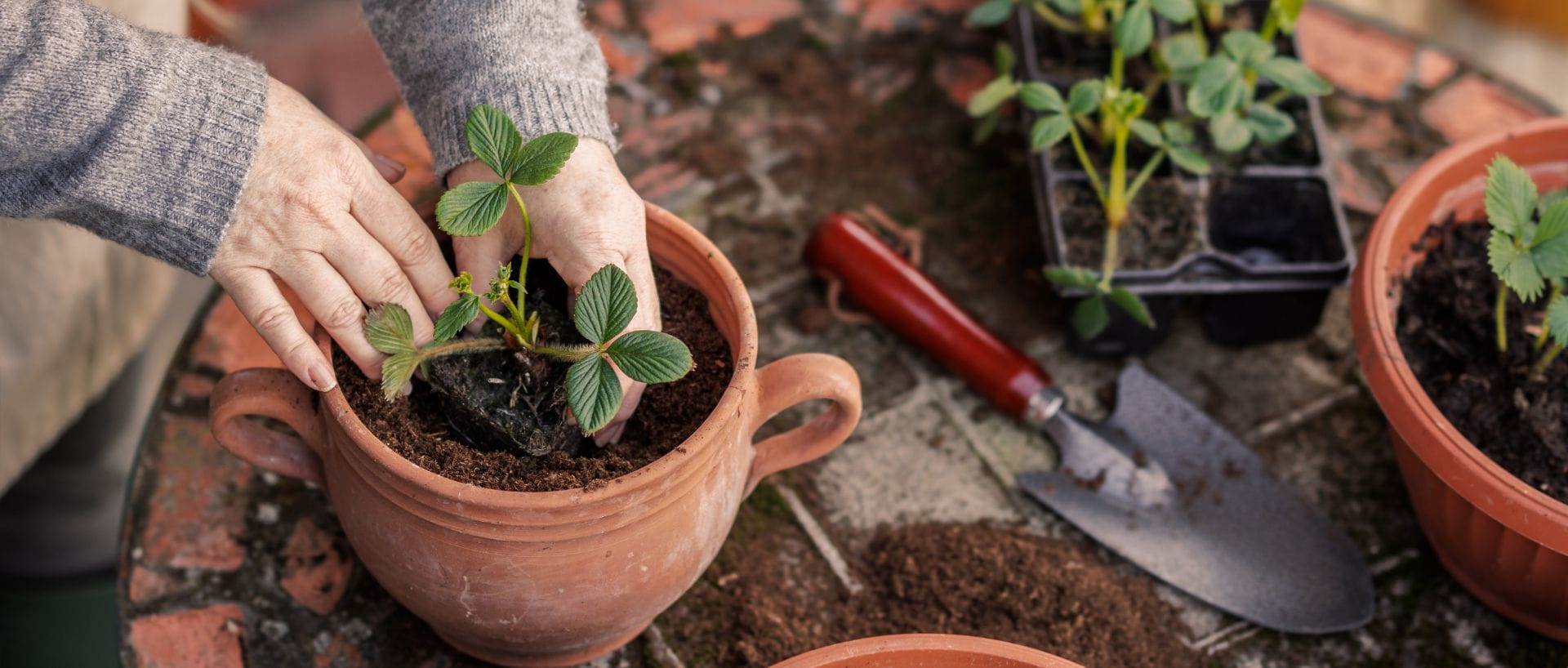By: HTG Supply on 06/29/2018
With technological advances, the ability to automate tasks is becoming easier and more common, not just in factories or self-driving cars but in the garden too. In this segment, we’ll discuss different ways automation can be applied in the indoor garden and the benefits that come with it. Plus, take advantage of the featured coupon code for savings on grow room automation systems and equipment!
Nature + Technology
We’ve been growing indoors for centuries now, yes centuries! In ancient Rome, Emperor Tiberius loved eating a specific cucumber-like vegetable and he requested that his servants find a way to provide them to him all year. They developed a technique of filling large carts with soil, planting the vegetables in those carts, and moving the carts outside during the day to get light. At night, they would bring the plants inside to stay warm. Today we have the technology to create any environment plants need to grow and some processes will be much easier and better for the plant if they are automated.

When looking at automation there are formal systems for rating how automated a system is – the easiest example of this is in the automotive industry, where there are levels rating how automated a vehicle A level 0 vehicle is not at all automated; a human must control every aspect of the vehicle. Jumping up a couple levels to Level 2, the vehicle can assist with steering or acceleration (like those cars that park themselves or automatically brake when there’s a threat). At Level 4, the car can control everything about your ride but still needs human intervention in unique traffic situations such as traffic jams or tricky temporary road conditions. At level 5, there’s no need for a wheel or pedals, the car controls absolutely everything about your trip and does not require user input in any situation (this level is still theoretical at this point, but it’s an exciting thought!).
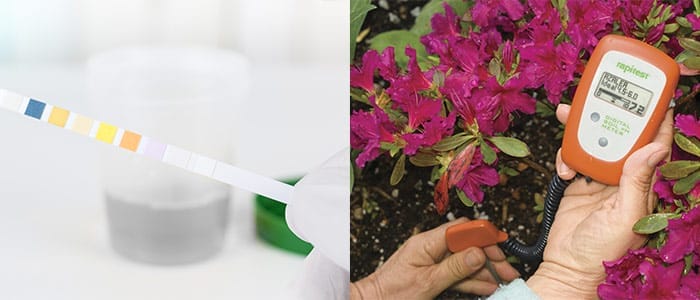
So what exactly are we talking about when we refer to grow room automation? For many, the term “automation” provokes images of machines, robots, or assembly lines. But, automation is simply defined as a technology or system wherein a task is completed with little to no human assistance. Automation in your grow space comes in all shapes and sizes, from simple to high-tech, just like gardens themselves. Some growers prefer a very hands-on approach and want to do everything themselves while others may be more tech-savvy or simply enjoy the convenience and time saving of automation. Ultimately, automating some things in your garden is going to improve your growing. Whether you are very traditional or very progressive with your garden, there is some type of automation you can use to make yourself a better grower or at least make your job a little easier.
Types of Automation for Indoor Gardens
What are some specific types of automation to use in the garden? The most common factors that are regulated are the light cycle, temperature, humidity, CO2 content, electrical conductivity (In hydroponic reservoirs), nutrient levels, and pH. Let’s take a closer look at how automation applies to each of these conditions, and while we’re at it, we’ll share a couple little tips and tricks we have picked up over the years!
Grow Lights – The most important thing you want to automate in your garden is the light cycle. Different plants will flower depending on whether they are long or short day plants. You need to have a specific lights-on/light-off schedule to control how your plants flower/fruit. ALL indoor growers should be using a timer. It’s one of the most affordable and easy-to-use types of automation; HTG Supply offers surge protectors with integrated timers, and that’s all you really need to automate lighting. However like with any technique there are various ways to use the light cycle to improve growth. Some growers start out giving plants 24 hours of continuous light (for plants that flower in the spring or fall only – doing this with plants that flower in the summer will cause them to flower without growing vegetatively). To simulate the end of summer growers will reduce the amount of light over a period of time, say 20 hours of light for a few days, then 18 and eventually getting to 12 hours of light and 12 hours of dark which will induce flowering.
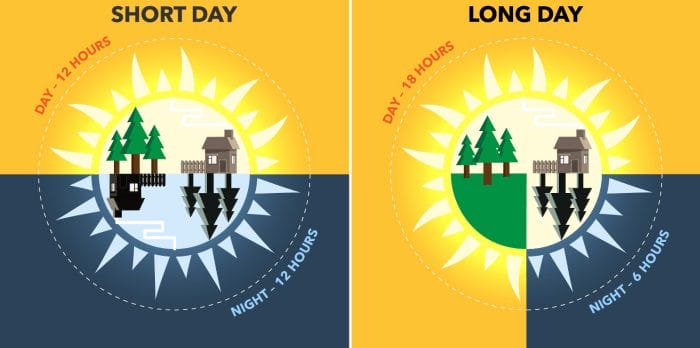
There are many ways to manipulate the light cycle, but you will need a timer to make sure it is done consistently each and every day. The daylight period does not change more than a few minutes from one day to the next, and if you forget to turn the lights on or off at the correct times, you can stress your plants and will get poor fruiting/flowering results.
Temperature – After light, the grow room temperature is the most common factor indoor growers need to monitor and control. In some climates or in different seasons you need to make an effort to keep your garden warm. In others, you have to keep your garden from becoming too warm. Almost everyone who grows indoors uses some form of automated temperature control – your air conditioning and/or heating counts since it essentially regulates the temperature of the indoor space (and even if you grow in a tent, the temperature surrounding that tent contributes to the temperature inside of it). However, you could take it a step further and have a temperature-controlled system in your growing areas, such as the one seen here, that senses when your temperature is too high or too low and responds by completing a circuit. When connected to an inline fan or air conditioner, this type of system will only turn on cooling when the temperature gets to a set point, and it will shut off when the temperature is where you want it to be for your plants.
Without proper temperature control, many growers will have heat spikes during the day, you can see this with leaf curl, stretching lanky plants or browning leaves near the light source. Alternatively, growers will have cold spikes during lights out and their plants will grow slower and start to look sickly. Every grower should have a thermometer with a min/max setting in their grow room. If you have heat or cold spikes, using a temperature monitoring system can allow you to maintain an ideal temperature in your garden, and you will have the energy-saving benefit of only running the system in question when it is actually necessary to do so!
Humidity – As with temperature, humidity can be regulated with an automated humidity controller. With plants growing in a small area, high humidity is usually what needs to be dealt with. High humidity (over 70%) can lower the rate of photosynthesis and even worse can lead to fungus and fungal diseases in your grow area. To reduce humidity, the controller can activate a dehumidifier or run the grow room ventilation system. It is possible in some climates, or with HID lights to have humidity lower than 30% which is considered low. Low humidity will slow photosynthesis. To increase humidity, the controller would activate a humidifier. Always be aware that certain forms of automation, as is in the case with humidity controllers, can affect more than one system. If you lower your humidity by ventilating or by using an air conditioner, you also affect the temperature and the CO2 level. Speaking of CO2…
Bonus tip: In the case of dehumidifiers, the moisture that is removed from the air has to collect somewhere, so most units come with a reservoir that needs to be emptied regularly. It’s often possible to modify that reservoir to simply drain out elsewhere, meaning your humidity automation now requires even less user input than before, thereby making it “more automated”.
CO2 Enrichment – Not everyone uses supplemental CO2 in their grow space. It is something that is typically reserved for use after achieving maximum growth with a given light source and nutrients. Carbon dioxide is not going to improve growth if you are not utilizing your light and nutrients to their full potential. For those of us who do use CO2, it can be a bit tricky to regulate. Carbon dioxide is colorless and does not smell so you cannot know what level it is at without a monitoring device. A basic form of CO2 automation is accomplished by running a CO2 source such as a CO2 tank and regulator system on a timed cycle. In this scenario, the timer cycle is calculated using the size of the area and the release rate of the gas. Using a simple timer and a properly calculated timed release will help to keep CO2 at optimal levels, but this method cannot account for ventilation and other activity that will impact CO2 levels. A more consistent method is to administer supplemental CO2 with a CO2 controller. These units feature a specialized probe that actually reads the saturation of the gas in the air and adjusts automatically whenever needed.
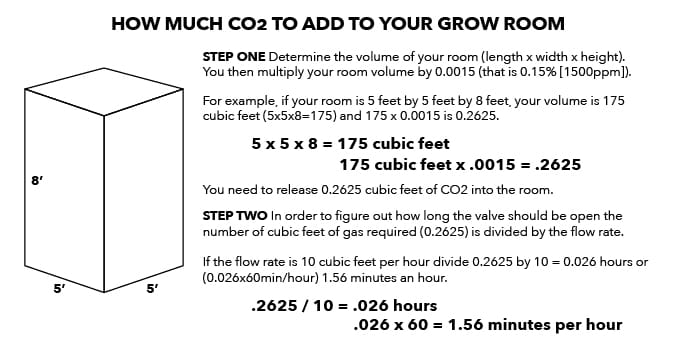
Water – Water is one of the most important molecules plants need to survive so it makes sense to have ways to monitor and automate the water your plants are getting. A very old method of automated watering is called “water wicking”. Water wicking employs a thin length of soft fabric or ribbon to supply water to your plants. One end of the rope or fabric is buried in the soil and the other end is placed inside a bucket of water. The water in the bucket will be absorbed by the fabric and wick along the fabric and enter the soil. This creates a flow of water from the bucket to the plant, the water will flow at a rate proportional to the amount of water in the soil which means it will keep the soil moist, but not too wet.
AutoPots are perhaps the technological zenith of automated watering. The AutoPot system uses only gravity to is a pot which capillary action to send water up to plants from a tray-like reservoir; as the plant uses water out of the soil water wicks up through the pot keeping the soil at the optimal moisture for plant growth. Another option is a water pump system hooked up to a timer, which will pump a certain amount of water after a certain length of time has passed (much like a light timer turning a light on and off). This is what is often used in most hydroponics units such as nutrient film technique (NFT) or ebb and flow hydroponic system.
Nutrients and pH – Once exclusive to commercial growing operations due to size and cost, automated nutrient and pH balancing systems are now becoming more common in smaller scale indoor gardens thanks to more affordable and efficient technology. Nutrient dosing systems are mostly utilized for hydroponics and work by monitoring the EC or PPM (which tells the controller how saturated the water in your hydro system is). This works by releasing a small amount of nutrient solution when that level gets low. There are also systems which monitor the pH of your solution and release small amounts of pH Up or pH Down to keep your pH at the optimal level for plant growth. One thing to keep in mind when using pH control systems is that many only correct pH one way, up or down because most situations only require adjustments one way or the other. Before using a pH controller, you should know whether your system’s pH trends upward or downward.
Complete Grow Room Controllers
You may have heard of or even used some of the garden automation techniques we’ve mentioned. Complete grow room control is an area where technology is rapidly increasing options. A garden that is nearly fully automated is possible with equipment termed “Complete Atmosphere Controllers”. These controllers keep track of your temperature, humidity, CO2, and lighting all in one place to coordinate conditions. For example, supplementing CO2 is most effective when lights are on so many of these controllers utilize light sensors to disable CO2 distribution during the dark period. Similarly, CO2 is disabled during ventilation cycles to prevent waste. Regulating temperature, humidity, and CO2 all from one unit keeps separate systems from conflicting (as long as your settings are correct), and reduces clutter in the garden by minimizing the amount of hardware needed for automation.
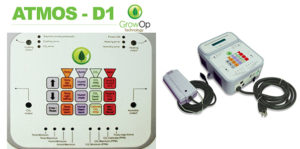
Newer and more advanced complete grow room control systems even sync up with a mobile app that allows users to adjust settings remotely. Many of these units also incorporate pH/nutrient dosing as well, and some are even “smart” enough to learn how your grow space changes over time and can change their own settings accordingly. This level of automation doesn’t come cheap, but if you have a large garden, if you need to ensure consistency in your product, or if you’re on the go often, a system like this will give you better control of the environment and save you hours or even whole days of work each week. We mentioned before that larger operations seek out automation solutions to save time, money, and labor – can you imagine the amount of money a company could save with a whole warehouse full of crops only needing to be maintained by a couple people? Speaking of future possibilities…
Future Technology
Remember back when we said that there was a level of automation in vehicles that’s currently only theoretical? That same level of automation in gardening is very real on many levels. One example is the Conic Pro-300 seeding machine, which can seed well over a thousand trays perfectly in less than one hour. And up until recently, harvesting your crops automatically was not possible – but machines are being created and trained for that, too! The Agrobot can gauge the ripeness of your strawberries and pick only the ones that are ready, and a company called Energid is developing a citrus-picking machine that scans oranges on a tree and picks all the ones it can detect. A Japanese company called “Spread” has developed a fully automated lettuce farm capable of producing 21,000 heads of lettuce each day (that is 7.7 million heads of lettuce per year). There are also bits of tech being developed to monitor your plant’s health, like the Agribotix drones, which fly over your crops with scanners, or the Plantbot app which uses your smartphone’s camera to take a picture of your plant and then analyzes it to determine whether your plant is healthy.
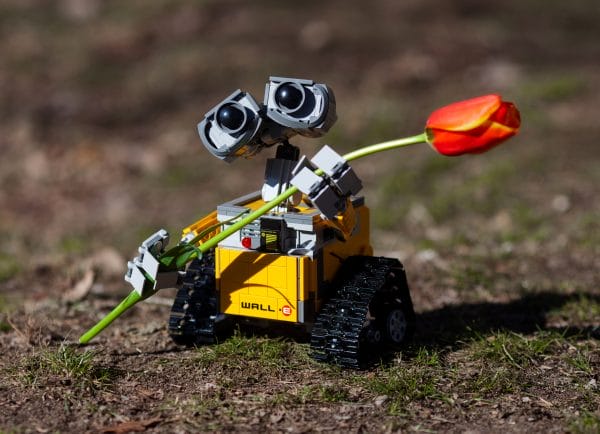
Automation Advantages
If there is one thing to take away from all of this, it is that automation can make you a better grower. Some parts of growing will be done better if they are automated. From regulating the light cycle or temperature to controlling various environmental conditions, you cannot compare human activity or accuracy to the regularity of automation. Grow room automation comes in various forms, from simple mechanical means to complex digital equipment, and regardless of how or what you grow, some level of automation is almost essential for managing basic conditions in the grow room. Most automation is simply a matter of a device monitoring a condition and sending a signal to a ‘controller’ that will then adjust the environment to the desired setting. The simplest benefit is the ability to precisely monitor and adjust environmental conditions in your garden to improve growth rates and yields.
All said, a fully automated garden is not for everyone, especially casual growers or those of us that actually enjoy spending lots of time with our plants. However, technology is opening the grow room door to more gardeners than ever though, including those of us who have trouble doing certain tasks, either because of a physical handicap, or time constraints from work/life. Only time will tell where the extent of automation in the indoor gardens ends, but most of us will probably still need to pick our own tomatoes for the foreseeable future. And even if the day comes where you can simply press a button and collect your harvest at the end, some of us will still prefer to reserve the pleasures of growing for ourselves anyway!
____________________
Automation tips of your own to share? Join the conversation, and comment below! Throw a picture on Instagram and tag us in it (@HTGSupply) – we’d love to see your results! Don’t forget to check out this week’s coupon code and sale information as well! From all of us here, good luck, stay safe, and Happy Growing!

FEATURED COUPON CODE: AUTO10
Enter the promo code at checkout for a 10% discount on our automation gear featured below or visit your local HTG Supply and simply mention this article to get the deal in-store! Thanks again for tuning into Talking Shop with HTG Supply! Offer valid through HTGSupply.com and in-store 06/29/18-07/31/18. Cannot be combined with other offers. Follow us on social media for all the Sales, Events and Customer Appreciation Days. In addition, learn more about indoor growing and get all kinds of tips, tricks and techniques
